Just after the announcement on January 18, 2023 that Nemat “Minouche” Shafik will become the 20th president of Columbia University this year, she embarked on a welcome tour of the University. Shafik visited Butler Library, where staff members greeted her with applause in the iconic main reading room and presented collection material specifically chosen for the visit.
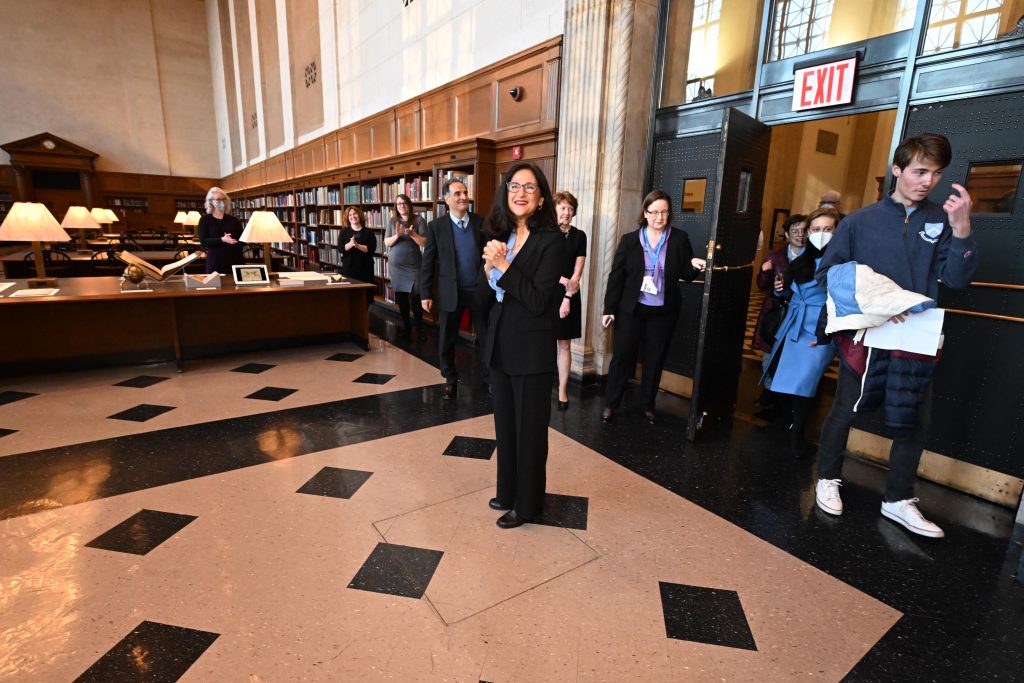
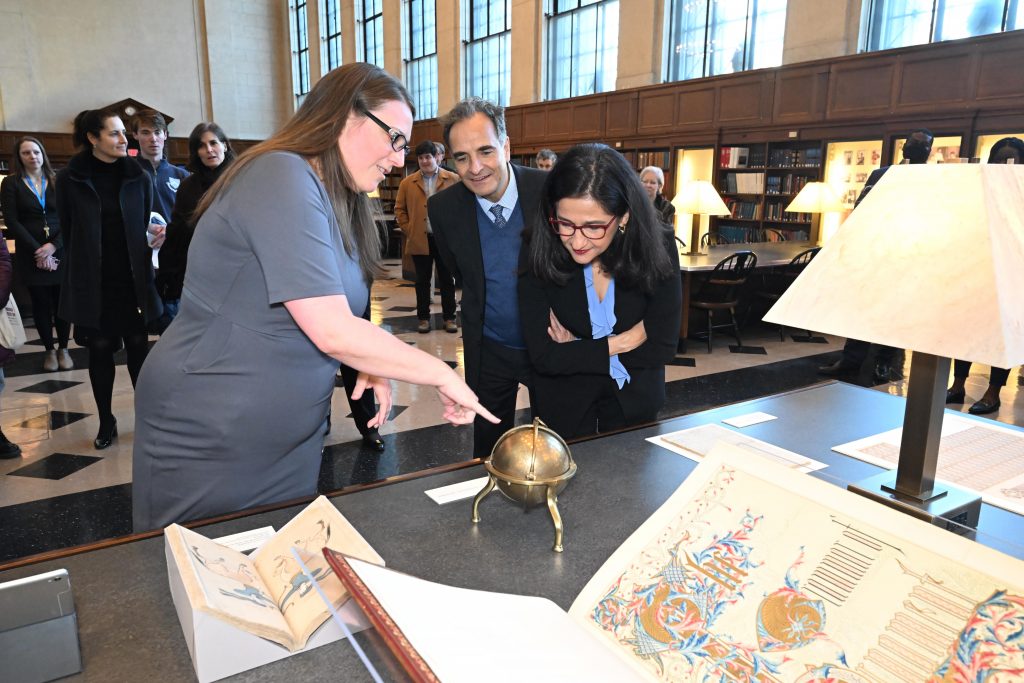
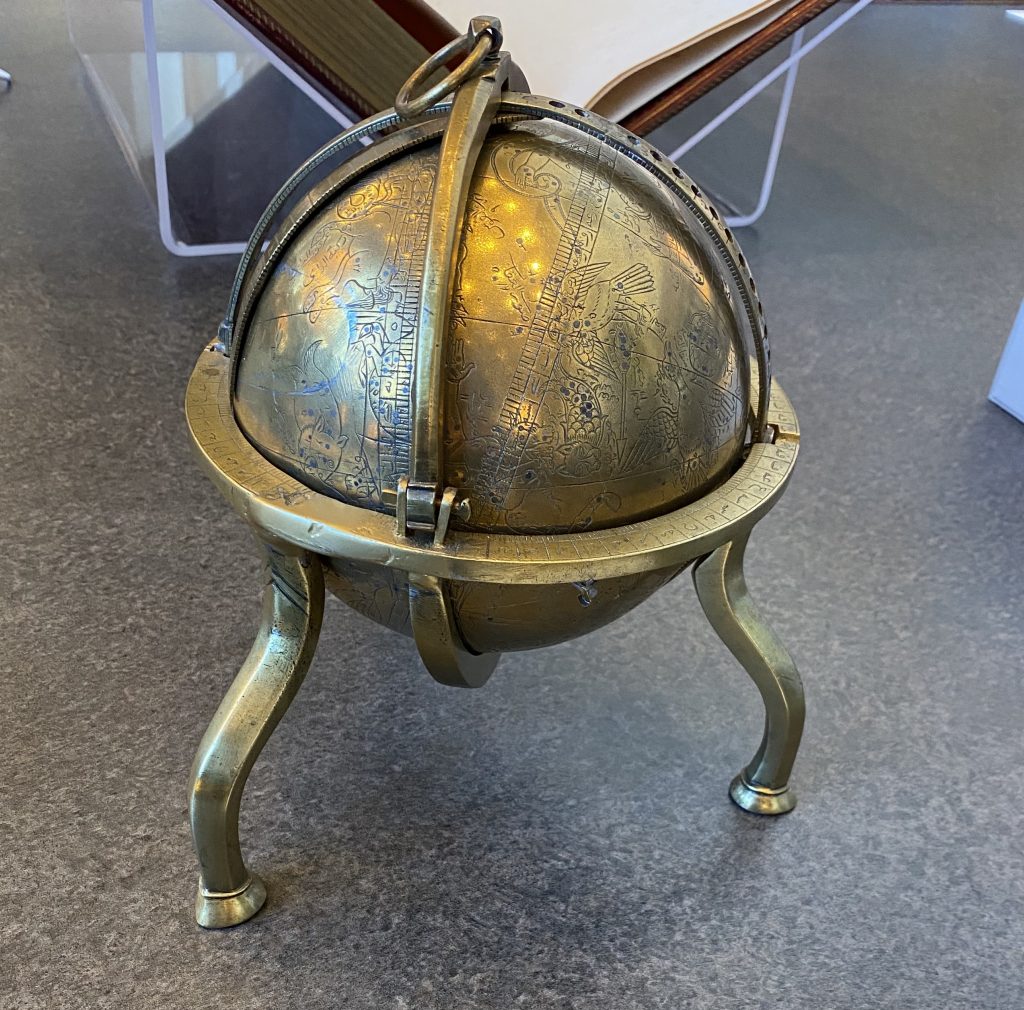
Lahore, signed by [Ḍīyāʾ al-Dīn Muḥammad b. Qāʾim Muḥammad b. ʿĪsā b. al-Hadded], 1055 H, [1645 C.E.]
Gift of David Eugene Smith, 1935
Rare Book & Manuscript Library
Sphere, bronze with stars in silver, dated 1055 AH. Signed by the maker, the grandson of al-Hadded who was chief astronomer under Humāyūn – Ḍīyāʾ al-Dīn Muḥammad b. Qāʾim Muḥammad b. ʿĪsā b. al-Hadded, 2nd Mughal Emperor (1508-1556). The globe is inscribed with pictorial depictions of the twelve zodiac constellations and the main stars are marked with dots filled with silver and are numbered. Some other Ptolemaic constellations like Cetus (sea monster) and Eridanus (river) are also inscribed. The circular stand around the globe has Greek zodiac signs and Arabic alphabets inscribed in the form of a scale. A depiction of a building is also visible on the globe, most probably representing the Prophet’s mosque in Medina.
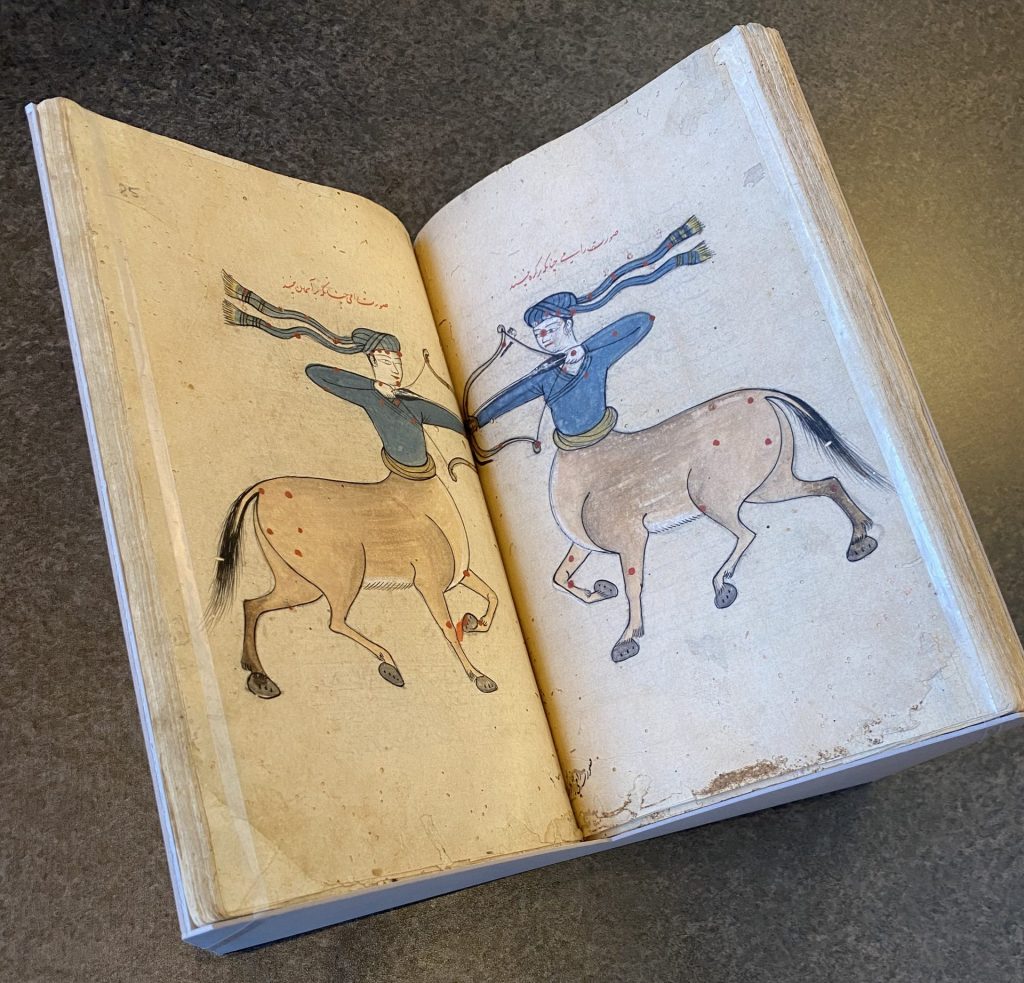
Kitāb-i Ṣuwar al-kawākib, 127 leaves, 16th century
Rare Book & Manuscript Library
Abu al-Husayn ‘Abd Al-Rahman al-Sufi systematically corrected, revised, expanded, and updated Ptolemy’s Almagest in a major book entitled The Book of the Constellations of the Fixed Stars, completed around 964 CE. This is one of only eight known copies of the work, considered one of the masterpieces of Muslim observational astronomy. Building on and critiquing both the Greek and the indigenous Arab-folk astronomical heritages, al-Sufi included two drawings of each constellation, one as it is seen in the sky and one reversed right to left as it would appear on a celestial globe. Al-Ṣūfī’s work is also defined by an unprecedented breadth of stellar observations and precise magnitudes. He describes forty-eight constellations, identifies the magnitudes and positions of over one thousand stars, and critiques Greek and Arab observations based on his own stellar observations. Moreover, al-Ṣūfī’s book is an important source for understanding Arabic star nomenclature and many of the star names mentioned in his catalog remain with us today. A high-resolution digital version of this item was also shown, via the Internet Archive.
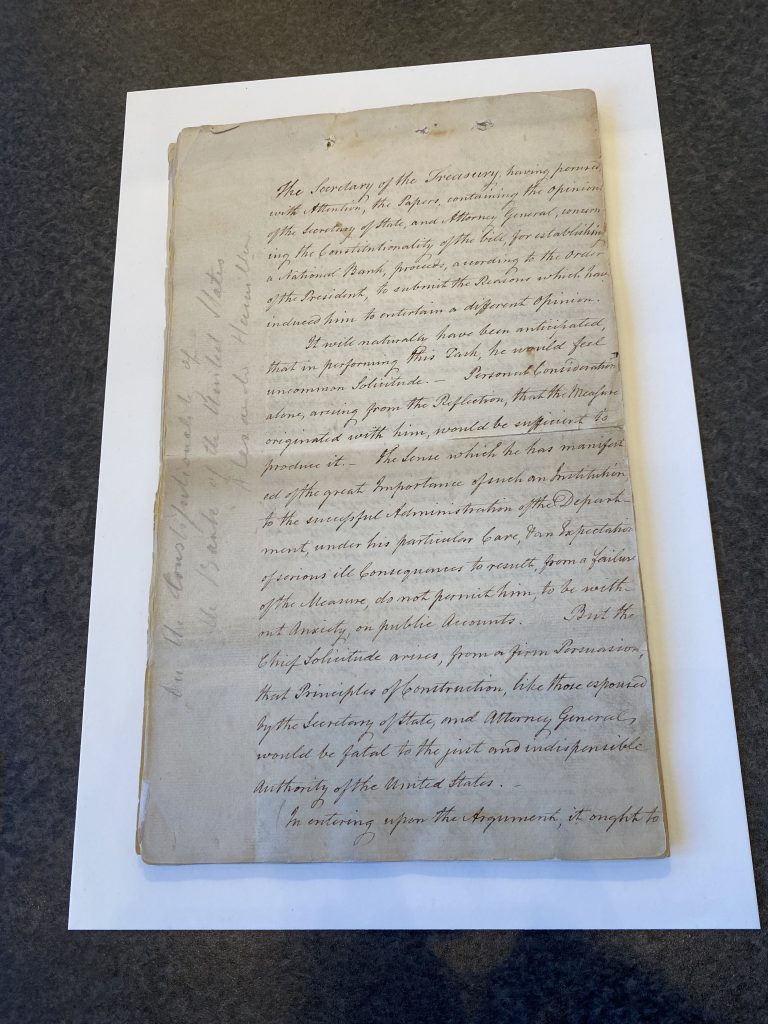
On the Constitutionality of the Bank of the United States
Philadelphia, 23 February 1791
Rare Book & Manuscript Library
This is the manuscript of the final version of “Genl. Hamilton’s argument in fav[or] of establishing the National Bank. Submitted to Genl. Washington.” The First Bank of the United States was a financial innovation proposed and supported by Alexander Hamilton, the first Secretary of the Treasury. The Bank was part of a three-part expansion of federal fiscal and monetary power, along with establishment of a federal mint and excise taxes. It was vigorously opposed by Thomas Jefferson as being unconstitutional, and who thought that states should charter their own banks.Hamilton’s argument in this document not only convinced Washington to approve the bill promptly (February 25, 1791) but it set a precedent for future generations to interpret the Constitution in a broader sense.

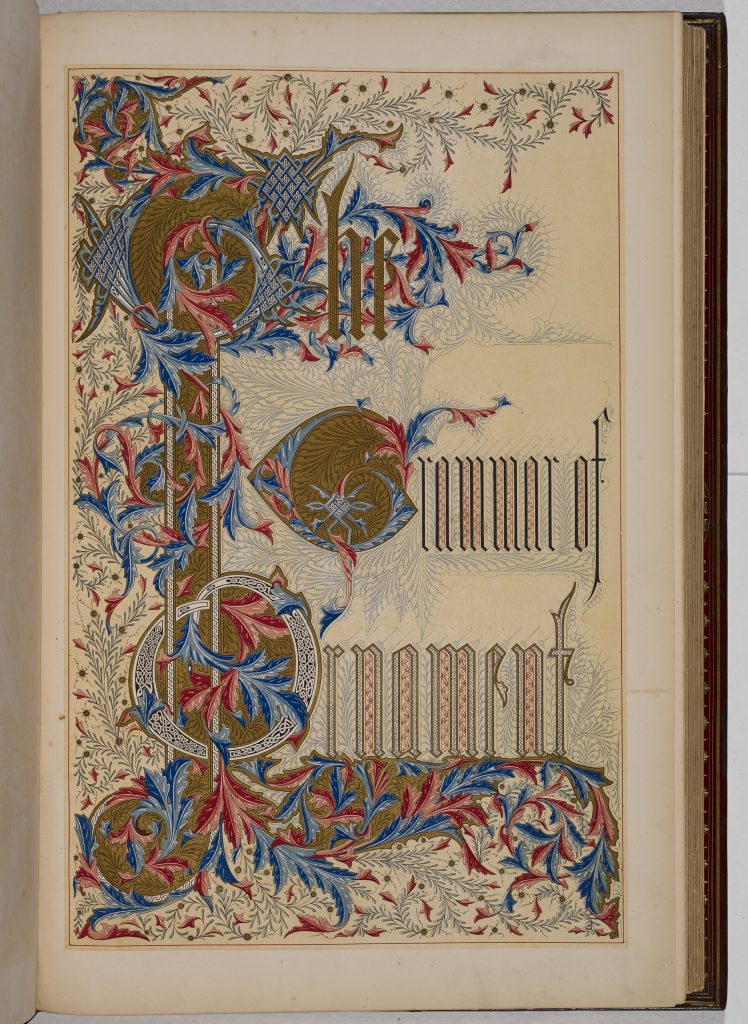
Owen Jones
1856
London
Avery Architectural & Fine Arts Library
In this volume, Owen Jones lays out 37 universal principles of design that underpin ornament from around the globe and across centuries hoping to provide designers with the tools to create their own ornament. Jones opened up a world of possible inspiration to Western architects who often relied on classical and gothic models in their architecture. To illustrate his points, he turned to the relatively new technique of chromolithography. Each color of these elaborate plates had to be printed separately, requiring up to 20 different lithographic stones to produce one plate. The binding of this volume is also unique. It was bound by Seton and Mackenzie in Edinburgh and shown as a specimen of bookbinding in the International Exhibition of 1862.
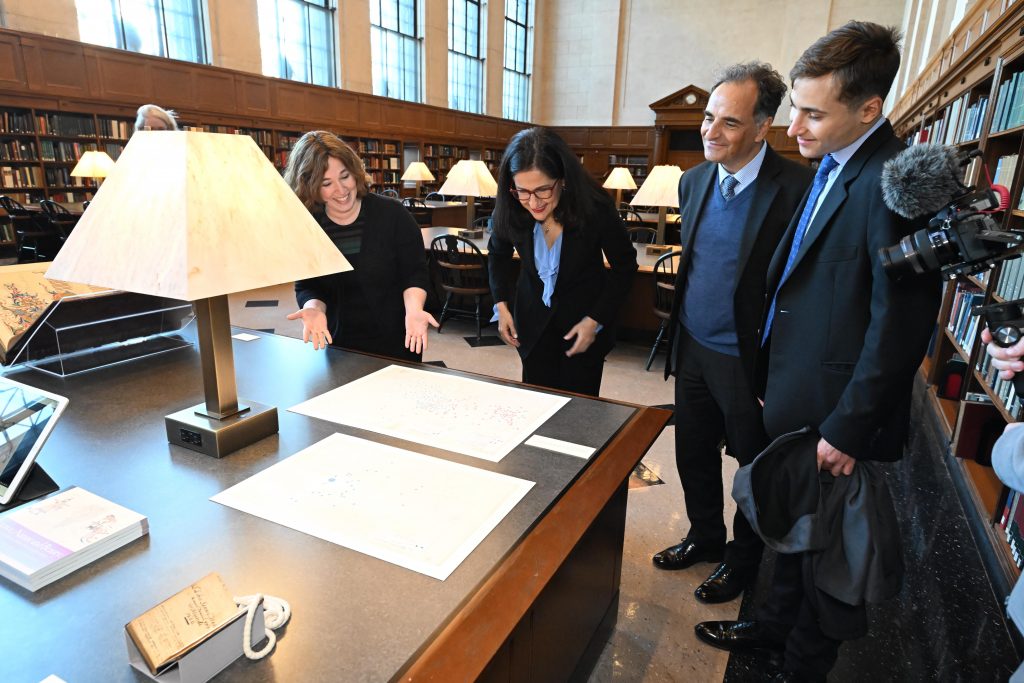
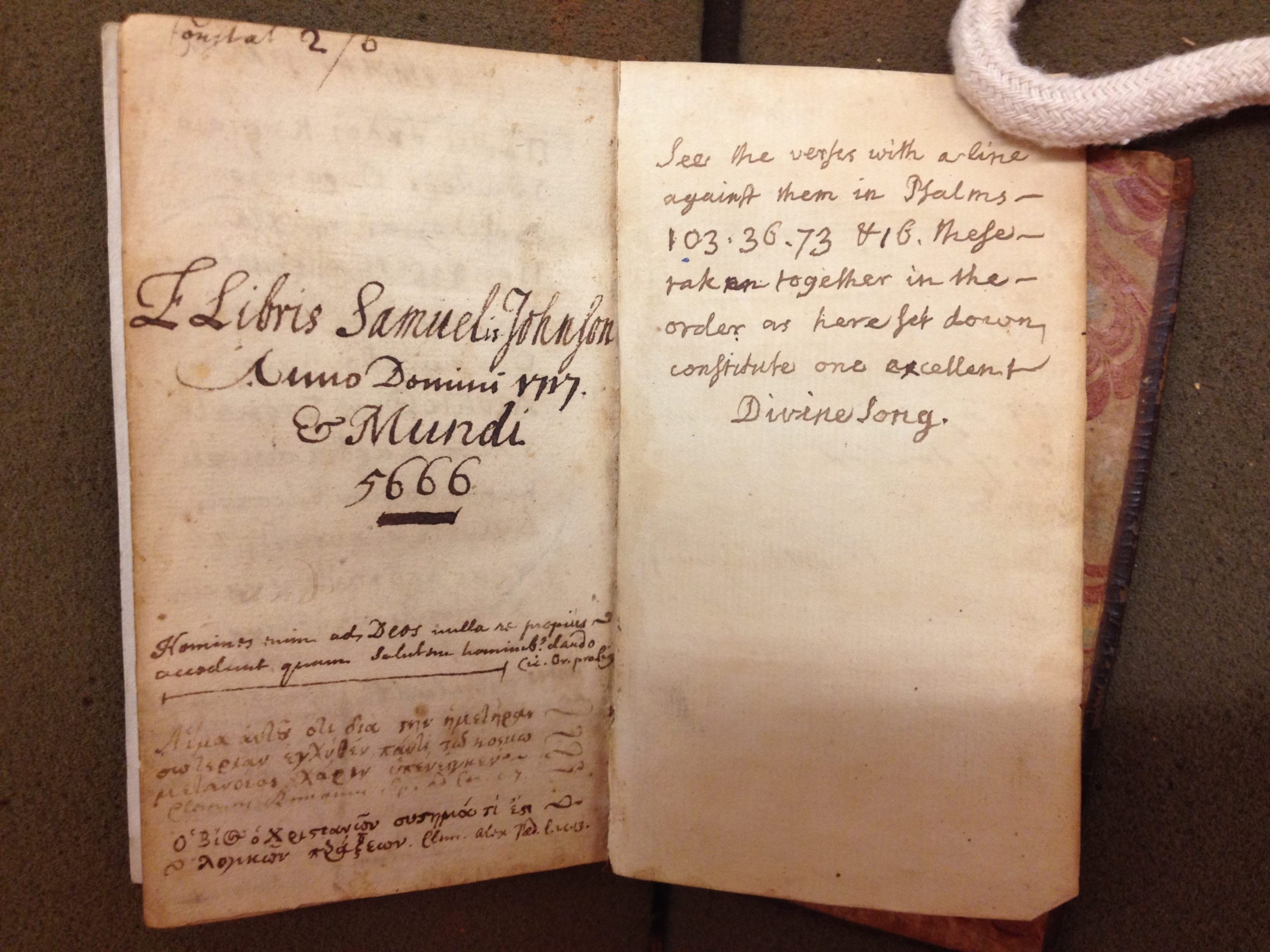
Columbia University Archives
This Hebrew Psalter includes annotations and the Lord’s Prayer by Columbia founder Samuel Johnson. Also included is the Latin formula that was used in conferring degrees. Samuel Johnson was a scholar and a teacher of Hebrew at Columbia and the language was taught at the institution from its founding through the end of the 19th century. King’s College (which would become Columbia) was the only colonial subscriber to the Kennicott Bible (1774-6), a monumental critical edition of the Hebrew Bible based on manuscripts.
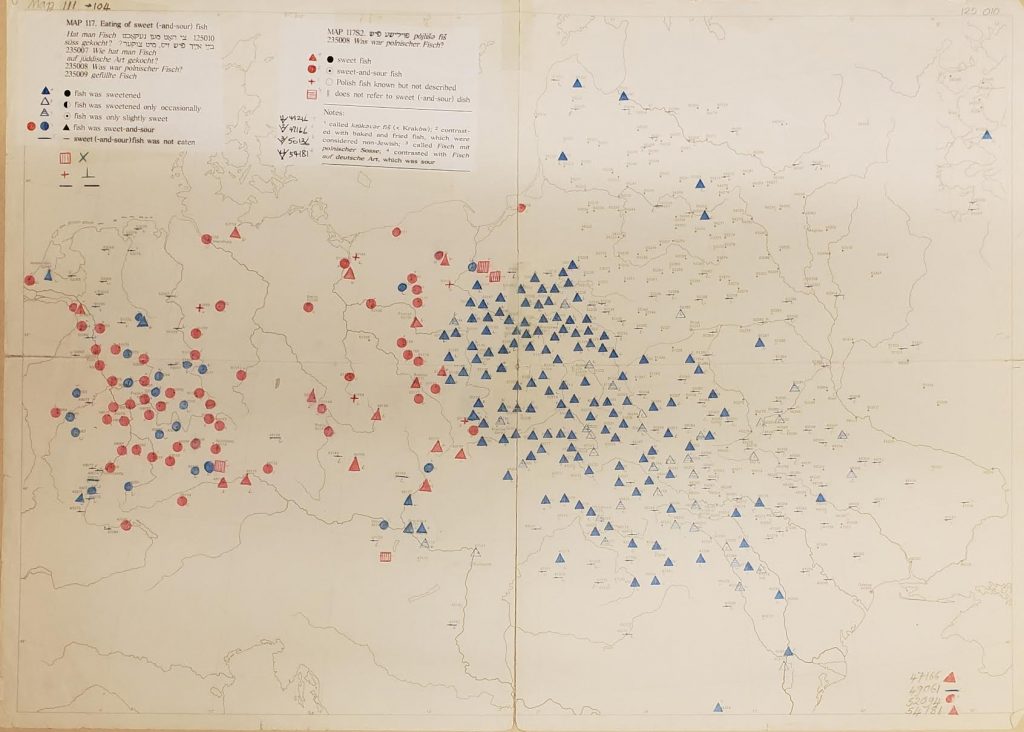
Language and Culture Archive of Ashkenazic Jewry
Rare Book & Manuscript Library
The Language and Culture Atlas of Ashkenazic Jewry (LCAAJ) was a massive, decades-long project to capture linguistic and cultural distinctions in Yiddish-speaking Jews based on their locations of geographic origin. The LCAAJ project began in the 1950s, and aimed to capture these distinctions from recent immigrants to the United States in the years immediately following World War II. Understanding that there was a limited time before the speakers of these variants would disappear, the Columbia-based linguistics team interviewed over 600 respondents with c. 2500 questions to capture many aspects of the Yiddish language and of distinctions in Jewish culture across the recently decimated communities of Europe. The maps on display focus on questions around the so-called “gefilte fish line,” which identified cultural differences in Western European, German, Polish, and Lithuanian Jews through a culinary lens. The addition of sugar or pepper to one’s gefilte fish (among others) was a key feature of these distinctions.

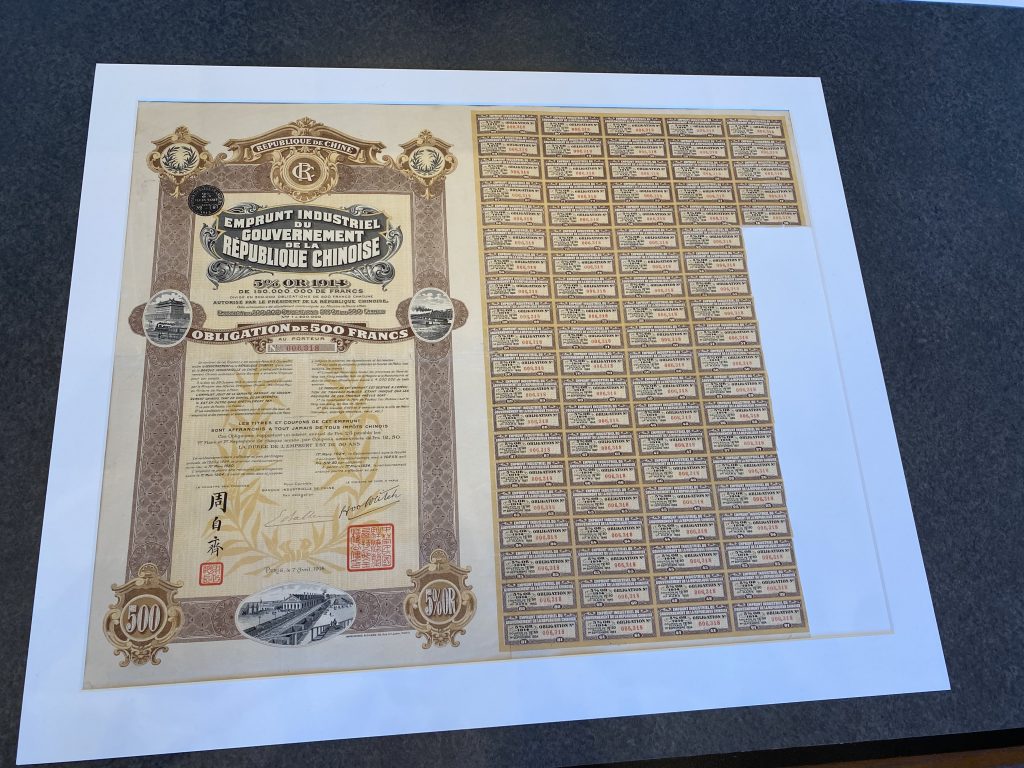
1914
Ta-Chun Hsu Papers, circa 1904-2016
C.V. Starr East Asian Library
Emprunt Industriel du Gouvernement de la République Chinoise, a government bond certificate of 500 Francs with the annual 5% interest redeeming stamps for infrastructure building in Nanking and Peking signed by ZHOU Ziqi, Minister of Finance, Republic of China in 1914. It is from the T.C. Hsu papers donated by the Starr Foundation. Zhou studied at Columbia University in 1897, served as the Minister of Finance, Education and Prime Minister in the Republic of China, 1912-1922, and had been in charge of sending the first three groups of Chinese students to study in the US through the Boxer Indemnity Scholarship Program from 1907-1912, including Hu Shih, a famous alumnus, whose portrait is hanging on the entry wall of room 302 in Butler.

Aurora Australis
Published at the winter quarters of the British Antarctic Expedition, 1907
Illustrated with lithographs and etchings by George Marston
Printed at the sign of The Penguins, Latitude 77⁰ 32ʹ South, longitude 166⁰ 12ʹ east. Antarctica, [1908]
Rare Book & Manuscript Library
“The first [and possibly the only] book ever written, printed, illustrated and bound in the Antarctic,” as described by Ernest Shackleton, this copy is signed by both Shackleton, editor and captain, and George Marston, illustrator and ship’s artist on the Nimrod. The Nimrod Expedition was the first of three expeditions to the Antarctic led by Shackleton. One of many treasures collected by Bassett Jones as part of his major collection of materials relating to the Polar Regions, his Libris Polaris. A member of the Explorers Club and the Grolier Club, Jones was a consulting engineer, graduating from MIT in 1898. His firm specialized in elevator and lighting design installation. Among many projects, his 1960 New York Times obituary cites the first theater floodlights in 1912, and the Empire State Building elevators in 1930.
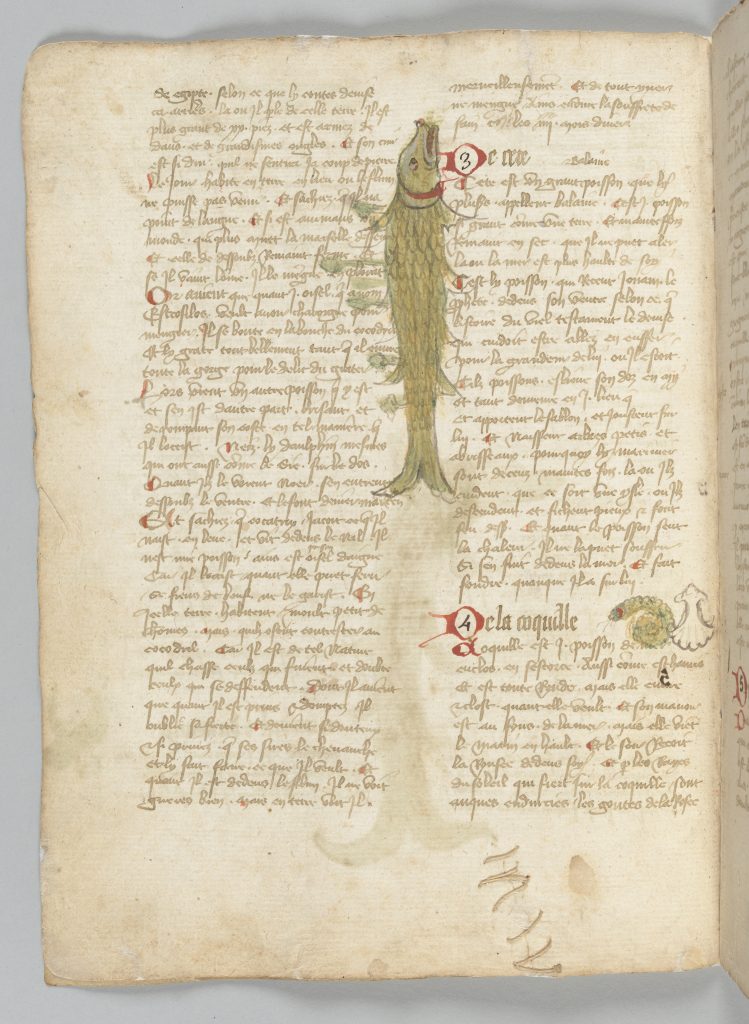
Brunetto Latini
France, 1424 July 24
Rare Book & Manuscript Library
On display were two of the disbound quires of a fifteenth century manuscript written in Middle French, a copy of a text originally written in Italy during the thirteenth century. The two illustrated entries presented are of Water and The Whale:
“This fish raises its back
on the high seas and remains in one place so long that the wind carries
sand and deposits it on its back, and finally grasses and little shrubs
grow. This is why many a time sailors are fooled and think that it is an
island, and they disembark and sink stakes into it and make a fire for
cooking. But when the fish feels the heat of the fire, he cannot bear it
and he flees into the sea and causes the destruction of everything on his
back.”
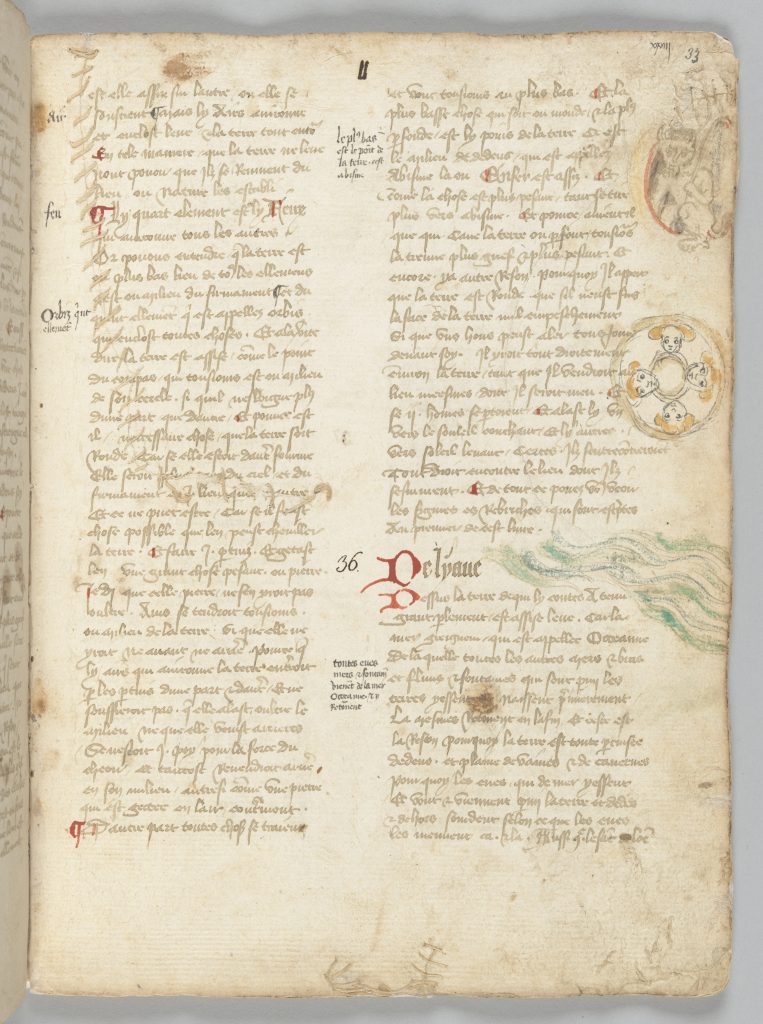
Brunetto Latini
France, 1424 July 24
Rare Book & Manuscript Library
From the text:
“On the earth, there lies water, that is, the greater sea, which is called the Ocean, from which all the other seas and inlets and rivers and streams which are in the earth emerge and arise first of all, and they also all flow back into the sea in the end.”
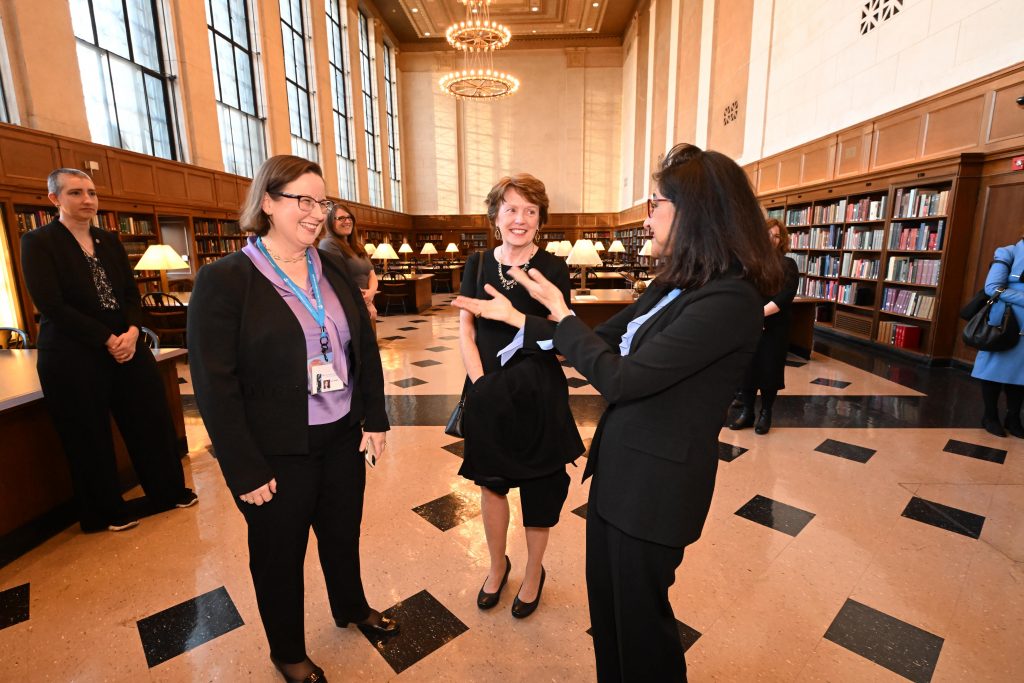

Photo by Eileen Barroso